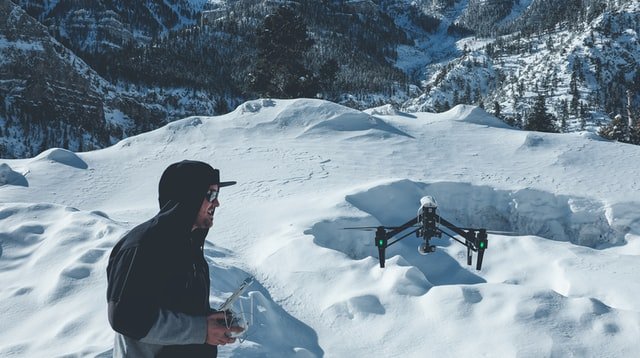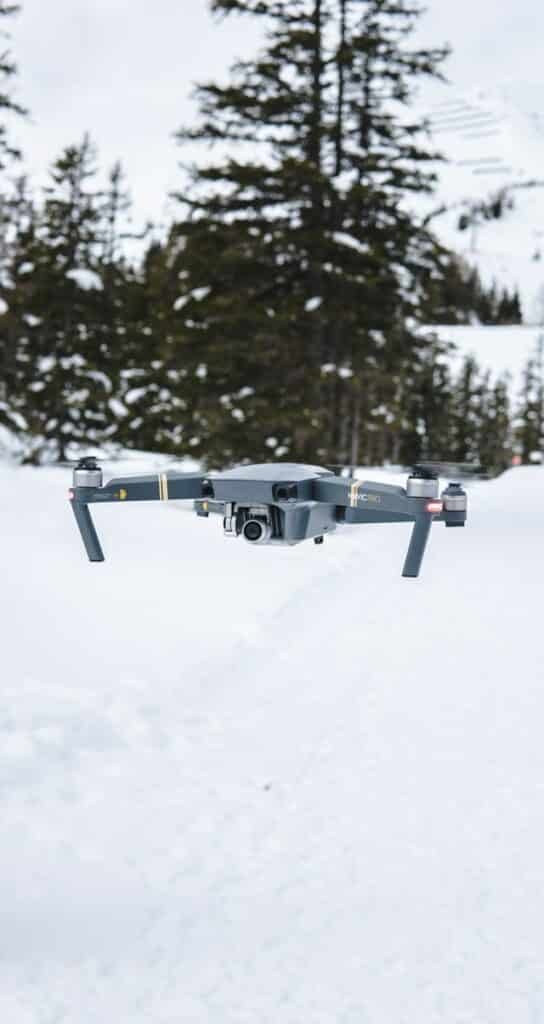If we talk about low-cost budget drones, then in 90% of cases, the instruction manual for the drone will unequivocally tell you that “flights in the cold season outside of heated rooms are not recommended, as they can lead to equipment failure.”
Ignoring these recommendations can lead to damage to expensive electronics (which are stuffed with almost all models). This means that any unpleasant event will not be considered a warranty.
Manufacturers play it safe, because they know the indefatigable nature of aviation enthusiasts, and even more so in winter, when the snow cover hides all the shortcomings of the surroundings. At this time, flying and filming a snow-covered city acquire a special charm.
What to do if “it is impossible”, but “really want to”? Let’s face it, if you approach the issue in a balanced way and take the necessary precautions, you can fly even in winter. We at Good Zoone, a drone repair service, have prepared some tips for you.
Main threats
First, let’s look at the dangers that threaten the copter in the cold season and how you can get around them.
Frost and icing
In fact, modern electronics easily operate at temperatures from -50 to +90 degrees Celsius (you can read a lot about temperature and electronics here). In this case, it is not negative temperatures as such that are dangerous for the stuffing of the drone, but the consequences of working in the cold.
After flying the drone at low temperatures, parts of the drone cool down and when you bring the drone into a warm room, moisture will condense on them. However, it does not evaporate quickly enough and can cause harm by destroying the board and other conductive parts.
Batteries, motors with speed controllers, and servos are equally at risk, and repairs in this case can cost a pretty penny. That is why it is also not recommended to fly in fog or rain without prior modification of the drones.
One solution to the problem is waterproofing vulnerable parts, especially electronics.
Another solution is to cover the boards and regulators with a special waterproof varnish (aerosol cans have proven themselves well). This will protect against direct contact of the boards with water.
A super budget option is the usual cling film, which is simply wrapped around the drone’s rays. The advantages of the film are that it is light and stretches well, fitting snugly to the body of the model.
As you can see, the main measures come down to minimizing education and the harmful effects of condensate on electronics.
Fragile body materials
This problem is inherent in inexpensive budget drones, and eminent quadcopter models like the Phantom are not threatened.
Inexpensive plastic used in budget models does not tolerate sudden changes in temperature. In the cold, it can become brittle and even crumble at the slightest collision.
To keep your drone in service for a long time, keep it away from extremely cold temperatures and avoid hard landings.
Avoid abrupt maneuvers, let the drone’s movements in the air be smooth. Do not hang too much weight on the drone frame, try to keep the load even.
Battery discharge
Batteries in the cold significantly lose their current output, as a result, the voltage is underestimated and the battery runs out twice as fast.
Frost is the main enemy of modern batteries: it accelerates their discharge. If the batteries do not have a self-heating function, as on the latest models of DJI professional copters (there is no such functionality on amateur ones yet), then the flight time is reduced by 2 or even more times.
You will have to constantly monitor the battery level, even if it has the functionality to automatically return to base when the batteries are critical. The reason is that the cold forces the batteries to run out before you place them in the drone and remote control compartment.
Thermal protection of the battery from any heat-insulating material (for example, from thin sheets of extruded foam plastic) will not be superfluous if the battery is not hidden in the case and is constantly blown by cold air streams from the propellers.
For better protection from the cold, you can simply tape the ventilation holes on the drone’s body with tape. In the summer, these holes serve to cool the motors and regulators, and in the winter they turn into an entrance gate for destructive moisture.
So you may follow the tips below to ensure a safe flight:
- Use only fully charged batteries.
- Preheat the battery to 20°C or more.
- Let the drone hover for a minute to let the battery warm up.
- Move the control sticks gently and smoothly to prevent battery surges.
- Always and constantly monitor the battery level, as it drops faster in the cold.
Another thing to consider when flying drones in winter
Dress warmly
Have you ever experienced your mobile device turning off unexpectedly due to the cold? As mentioned earlier, low temperatures can shorten the life of a battery, especially the LiPo type. So in addition to taking care of your flight battery, don’t forget to take care of your mobile device, which is best kept warm.
Make sure you keep your hands warm as well, as operating the remote control with cold hands is potentially dangerous. Be sure to wear gloves, but make sure that this model of gloves allows you not only not to freeze in the cold, but also to easily control the remote control.
Camera settings: exposure and white balance
To capture the beauty of snow, you need to manually set the camera exposure and white balance. Shooting in auto mode may result in dark images. This is because the camera’s exposure system can sometimes underexpose the snow, being fooled by its brightness. By adding extra stops, you will slightly overexpose your photos, but you will get the necessary compensation options for shooting snowy landscapes. Similarly, you need to adjust the white balance accordingly to get the right color balance for the snowy landscape. Otherwise, the snow may look gray.
Storage
If you have not used your drone for a long time, it may affect its performance. Proper storage is the key to safe flying. We recommend:
- Fully charge and discharge batteries once every three months to maintain performance.
- Remove propellers and install gimbal protection during storage.
- Store the aircraft in a dry place free from magnetic interference at a temperature of about 20-25°C.
Conclusion
Try to make the most of the last days of autumn and do not put off exciting flights for later.
Although if you really want to immerse yourself in shooting fabulous snowy landscapes with a drone, then follow the above recommendations. You can get amazing photos without harming the drone.
Author
Vitalii Nedzelenko is the marketing manager of Good Zone Service & Repairs. He is passionate about technologies, gadgets and digital marketing.



